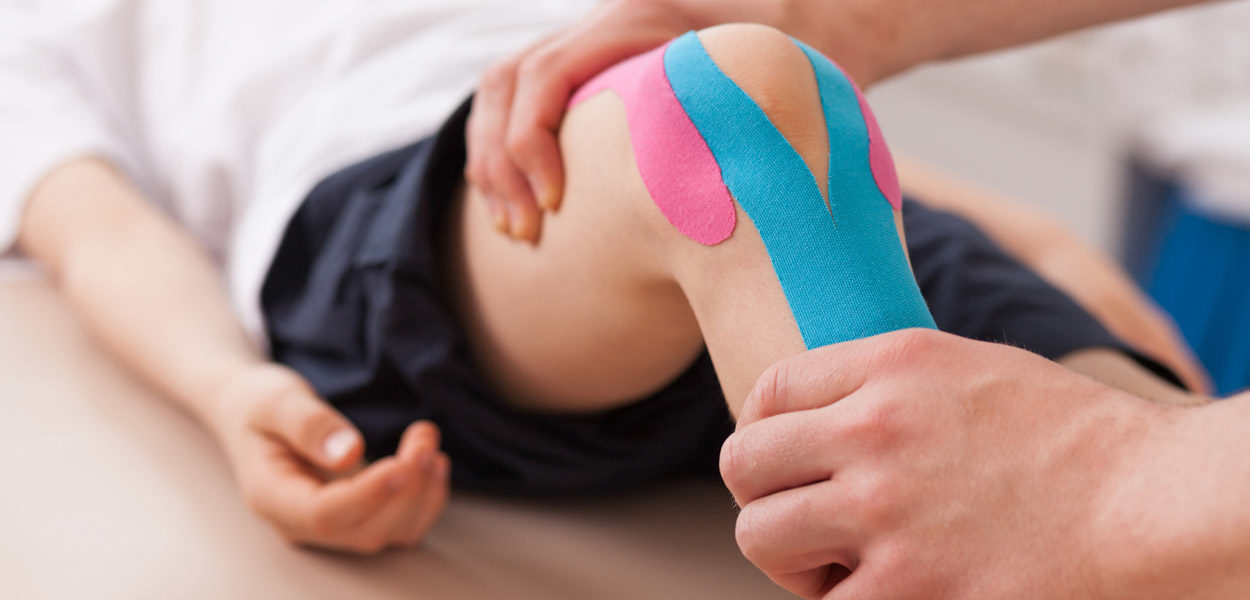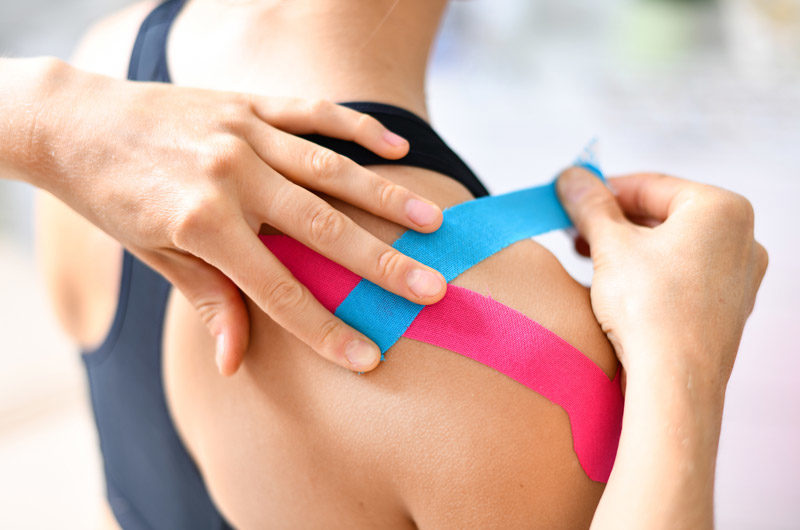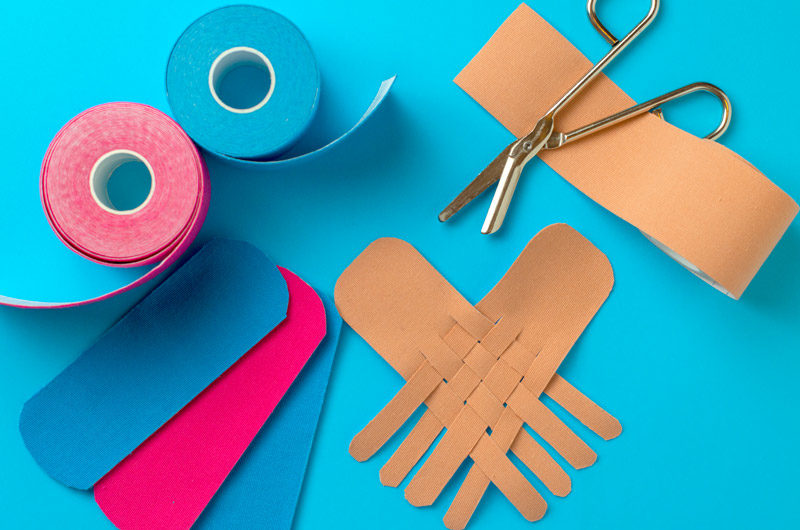section-1414e32

section-018cc4c
Sport taping is a therapeutic tape that is applied strategically to the body to provide support, minimize pain, reduce swelling, and improve performance.
The History of Sport Taping
The original sport tape, called Kinesio Tex Tape, was developed by Dr. Kenzo Kase in the late 1970s. Kase was a Japanese chiropractor who needed a tape that provided support but didn’t restrict movement. Today, kinesiology tape is worn by athletes in a variety of sports.
How Sport Taping Works
Kinesio Tex Tape was created with a proprietary blend of cotton and nylon. It was designed to mimic the skin’s natural elasticity so that wearers can retain their full range of motion. The tape has a medical-grade water-resistant adhesive that lasts for three to five days, even while the wearer engages in strenuous physical activity and takes showers.
section-24f3387


section-c8617d2
Benefits of Sport Taping
When the tape is applied to the skin, it recoils and gently lifts the skin to create a tiny space between the skin and the tissues underneath it to help reduce the risk of joint irritation.
Kinesiology tape can also be used to lift the skin over tense, knotted muscles, forcing pain receptors to send a new signal to the brain and decreasing tension in the trigger point and increasing flexibility.
Another benefit of sport taping is improved circulation of blood and lymphatic fluids, which in turn helps reduce swelling.
How is Sport Taping Used?
Kinesiology tape is most effective when used in conjunction with other physical therapy treatment, such as manual therapy. Sport taping is helpful in reducing pain and swelling, but is not used as a stand alone treatment.
Physical therapists may also use kinesiology tape to provide increased support to muscles and joints. Patients with patellofemoral stress syndrome, Achilles tendonitis, or IT band friction syndrome may benefit from taping.
Kinesiology tape is unique in that it does not restrict movement, and can even potentially enhance movement and endurance. Research has shown that applying kinesiology tape to fatigued muscles can help improve performance. For example, marathon runners often run with tape placed along the glute to keep it “awake” and remind it to keep working.
Kinesiology tape can also be used to correct improper posture in the head and neck. Some physical therapists believe having the tape sensation on the skin helps improve patients’ awareness of posture when standing or moving.
Though kinesiology tape shouldn’t be placed on an open wound, some evidence suggests the tape can help improve the long-term appearance of scars after surgery or injury.
Who is NOT a Candidate for Sport Taping?
Kinesiology tape should not be used in the following circumstances.
- Open wounds
- Deep vein thrombosis
- Active cancer
- Diabetes
- Allergy
- Lymph node removal
- Fragile skin
How Kinesiology Tape is Applied
Patients should ask a physical therapist to show them how to properly apply kinesiology tape, as there is a specific pattern that should be followed to address the patient’s unique condition. Tape may be applied in an X, Y, I, or fan pattern, depending on the patient’s health goals. Some patients may need both stabilization and decompression strips.
There is also a proper way to remove kinesiology tape. Be sure to follow your physical therapist’s directions for removing the tape.
